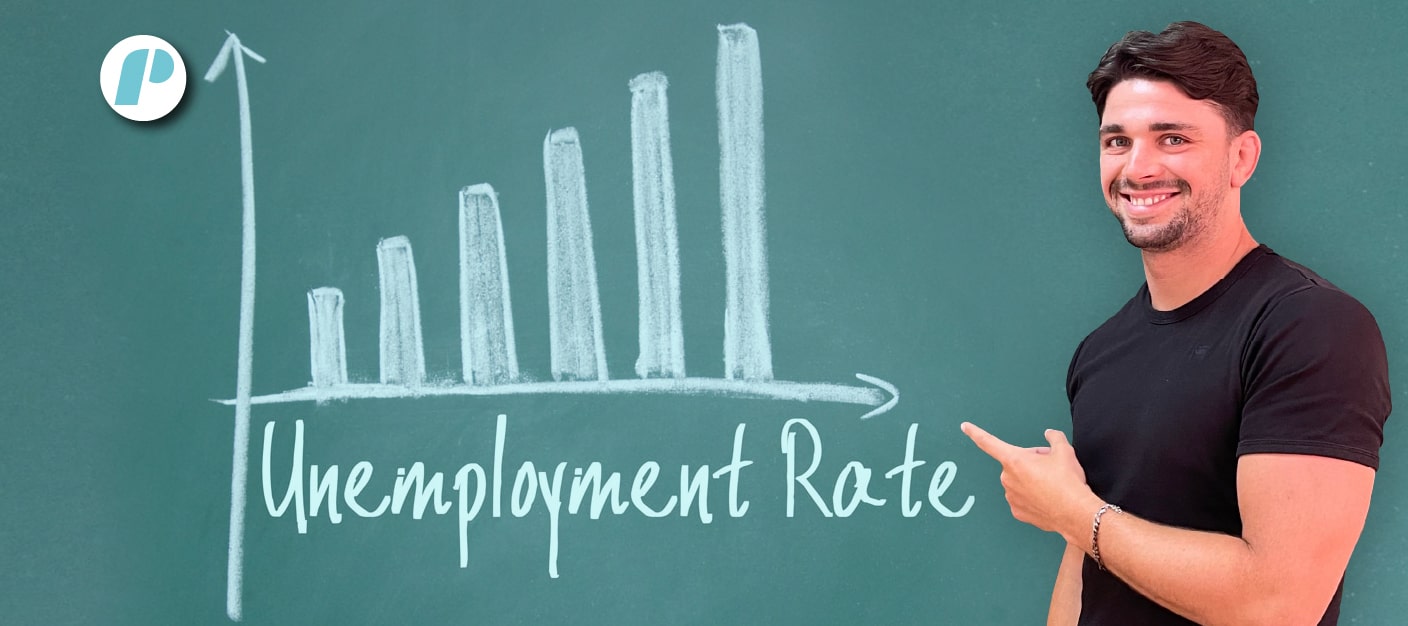
In the first article of the “Federal Reserve System” series, we spoke about the different elements that compose the “Fed” and about the FOMC in particular. We have described the Fed’s mandate as “maximizing employment while protecting the Dollar and the American economy” and we’ve also briefly talked of the different ways it has to achieve it.
In this second article, we’ll explain what the Unemployment Rate is and the effect it has on the economy and the market.
What is the Unemployment Rate?
Well, put simply the “Unemployment rate” is the way we measure the number of unemployed people as a percentage of the total labor force.
It is one of the most important indicators of an economy’s health; it directly affects it and it is, at the same time, directly affected by it. This is the reason why maximizing employment is a perennial objective of all, the voters, the Fed and the Government.
Generally speaking, in a healthy and growing economy, the Unemployment Rate tends to be low as Companies have more money to invest and more need to recruit new staff whilst, during economic downturns, Companies are more likely to reduce staff as well as investments causing the Unemployment rate to increase instead.
On the other hand, a high level of employment means that more people have more money to spend. And when people have more money to spend, generally, they spend it. And that’s great for the economy.
A high level of unemployment indicates that the economy is inefficient and under-producing.
What can the Government and the Fed do to reduce unemployment?
The Government
Politicians who see a high level of employment during their term are more likely to enjoy the approval of both the voters and the financial market. It’s not surprising, therefore, that fighting unemployment is always high up on any political agenda and that the Government has tools of its own to try and “put more people into work”. These includes (but are not limited to):
- Tax cuts or tax benefits to businesses (to increase Companies’ capital for investments that could partly be spent on recruiting workers).
- Tax cuts or tax benefits to the general public (to increase public spending and Companies’ revenue which, again, can be used to employ workers).
- Increase targeted public expenditure (the government can increase its spending on projects that directly affect the employment levels such as infrastructure projects, apprenticeships and employment subsidies to Companies that recruits a sufficient number of people).
- Targeted policies (such as improving urban and extra-urban mobility, reducing power to the Trade Unions to reduce wage bargaining, improving employment-market flexibility and tightening requirements to receive unemployment-related benefits.
The Federal Reserve System
Whilst the Government is in full control of all Fiscal policies to boost economic growth, the Fed is charged with controlling and deciding on the monetary ones.
The Fed uses its control to effectively “inject money into the economy” to boost employment levels (as part of its mandate) and “withdraw money out the economy” when it needs to reduce inflation (the other part of its mandate).
To increase the money supply in the economy and the employment levels, the Fed has many tools at its disposal, the most common of which are:
- Reducing the (short-term) Interest Rate (this makes “money cheaper”. It allows Companies to borrow more money at a cheaper interest rate which, in turn, allows them to spend more money on recruiting and other investments).
- Open Market Operations (the Fed buys Treasury Bonds from the open market effectively swapping bonds for cash that is free to enter the market, boost the economy and, in turn, again, increase employment.
- Reducing the reserve requirements (banks have more capital available for lending and investing. This increases the amount of money in circulation which makes it easier for people to buy companies’ products and services and makes it cheaper for companies to borrow money to invest and recruit)
How do Unemployment Rate announcements affect the market?

Unemployment rate figures are released on the first Friday of each month and refer to the prior month.
As well as the Fed and the Government, traders and investors also give particular relevance to the unemployment figures. Low unemployment means that Companies can expect higher demand for their product and services and what kind of investor wouldn’t like that?
Moreover, when companies expect higher demand they are more likely to decide to invest in more staff to increase production. This would further increase employment which, in turn, would further increase demand.
Market sentiment concerning the unemployment rate is better expressed by the inverse relationship it has with S&P500.
When the announced Unemployment Rate is higher than the previous month, the S&P500 price often increases and vice-versa.
How important are Unemployment Rate announcements for traders?
The Unemployment Rate is a lagging indicator and gives an insight into changes in the economy that have already occurred rather than into those that are happening now. Nonetheless, the figures can further help to understand current events and predict future market behavior.
Traders need to be particularly aware of increased volatility when the Unemployment Rate announced is different from what the market expected.
What’s next in the “Federal Reserve System” series?
So far, we learned that the “Fed” is formed by the seven members of the “Board of Governors”, the twelve Federal Reserve Banks and FOMC, we talked about the Fed’s mandate to maximize employment and safeguard the Dollar and the American economy and examined the tools the Fed has to boost employment level.
In the next article, the focus will be on “Inflation”; the other side of the coin.
Now that we know how the Fed has the power of “creating” capital and inject it into the economy, we will discuss what happens when “a lot of money in the economy becomes too much money in the economy”, we’ll find out what the Fed can do to prevent it and protect currency and economy and you’ll understand why it’s so important for traders and investors.
As always, I hope this helped!
If you liked this post make sure to share it!





